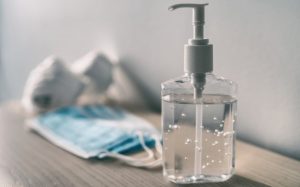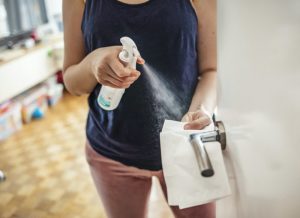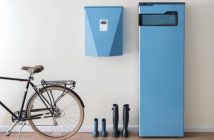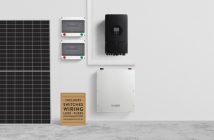Do you know the difference between a sanitiser and a disinfectant? The Covid-19 pandemic and lockdown has made us all more aware of hygiene. As a result, by now everyone should be familiar with using sanitising sprays on themselves as well as disinfecting products for surfaces, but how many people are mistakenly using the same product for both jobs? There’s a difference between a sanitiser and a disinfectant and it’s important to understand the difference between them so you use the product you intend to.
The terminologies sanitiser, disinfectant and antiseptic, were just words to most people before Covid-19 hit. People knew the words but perhaps didn’t understand the clear differences between them all.

Sanitiser versus disinfectant
Sanitising is the process of reducing (not killing or destroying) the appearance and growth of bacteria, viruses and fungi. Its function is to reduce pathogen levels by at least 99.9%. Disinfection is the process of killing or destroying harmful and objectionable bacteria, viruses and other pathogenic microorganisms by using various agents such as chemicals (biocides, virucides), heat, ultraviolet light, ultrasonic waves, or radiation. Its function is to destroy 99.999+% of pathogens. On the other hand, the function of sterilising is to destroy 100% of bacteria or virus on a surface.
It’s important to understand that the sanitiser we use on our hands and body will not work the same way on surfaces. Because most sanitisers typically have a large component of alcohol (70% recommended by the WHO) these will quickly evaporate when sprayed on a surface, which renders it useless seconds later. When buying a sanitising product look for ingredients like alcohols (not less than 70% ethanol or isopropanol).

A registered disinfectant, which should never be sprayed on skin, will be effective on surfaces for a lot longer than any sanitising spray. A good disinfectant should have good cleaning properties, be soluble in water, and be stable in both concentrate and use-dilution. It should also be odourless to facilitate its routine use, nontoxic, as well as fast-acting to ensure a rapid kill of germs. The product should also have a wide antimicrobial spectrum and should not be affected by environmental factors or the presence of organic matter (e.g., blood, sputum, faeces). Make sure it is also compatible with soaps, detergents, and other chemicals encountered in use and that it does not corrode instruments and metallic surfaces or cause the deterioration of cloth, rubber, plastics, and other materials. Lastly, look for a product that has a residual effect on treated surfaces and that leaves an antimicrobial film on the treated surface.
What should I use sanitiser for?
Sanitiser should be used on high-risk frequently-used body parts, such as hands and arms, as well as high-use inanimate surfaces, such as personal equipment (like computer keyboards, tablets, mobile and fixed phone devices, light switches, etc.), where the likelihood of pathogen transfer from the surface is high.
Find the best prices on sanitising products online with PriceCheck now:
What should I use disinfectant for?
Disinfect high-risk inanimate surfaces, such as food preparation surfaces and all surfaces in a healthcare facility where the likelihood of
pathogen transfer from the surface is high. Disinfect high-traffic inanimate surfaces, such as floors, walls, windows, counter and desk tops,
tables, door & window handles, light switches, ablution facilities, personal electronic and other frequently handled equipment, etc., where the likelihood of pathogen transfer from the surface is high.
Find the best prices on disinfectant products online with PriceCheck now:




